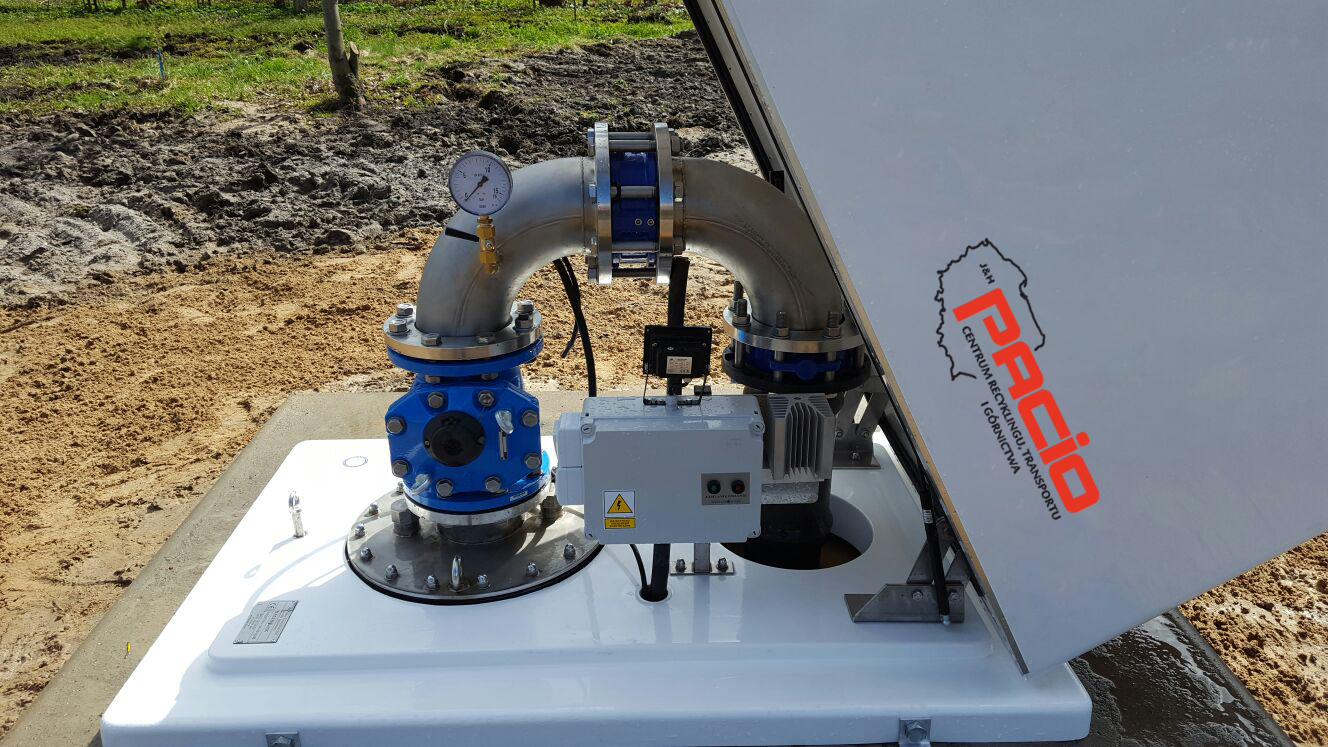WE HAVE EXISTED SINCE 1973
WE HAVE BUILT OVER: 1600 DEEP WELLS AND 650 ABYSSINIAN WELLS
WE ALSO DRILL WELLS USING THE SHOCK-ROTARY METHOD -check the benefits
AS ONE OF THE FEW COMPANIES IN THE EU, WE OBTAIN WATER FROM DEPTHS OF OVER 300 METERS
Drilling Wells Using the Flushing Method
- Drilling wells using the flushing method is a technique in which a stream of fluid (usually water) under high pressure is used for drilling.
- The fluid flushes out waste and detritus, which are carried out of the drill hole.
- This method is mainly used for drilling medium-depth wells with a relatively small diameter.
Drilling Wells Using the Percussion-Rotary Method
- Drilling wells using the percussion-rotary method is a technique that utilizes impact and rotary force to extract water from the depths of the earth.
- Specialized drilling machines generate impact and at the same time rotational torque, allowing for effective and very precise access to desired aquifer areas underground.
- This method allows reaching deeper groundwater layers and ensures stable access to high-quality water.
Exploratory Drilling
- Exploratory drillings are conducted to collect data and information about the geological conditions of a specific area.
- Their purpose is to understand the geological structure of the terrain, the location of aquifers, geological composition, and other geological parameters.
- The data collected during exploratory drillings are used to assess potential locations for wells, analyze land stability, identify natural resources, and other scientific and engineering applications.
Geological Drilling
- Geological drillings are conducted to obtain rock and soil samples from various depths for analysis.
- These samples are then subjected to laboratory tests to determine mineral composition, geological structure, degree of consolidation, and other geotechnical and geological properties.
- Geological drillings are often performed as part of geotechnical investigations before construction begins, to assess land stability and identify potential geological hazards.

equipment deployment
A deep well with a depth of approximately 94 meters will be constructed here.

filter replacement
Cleaning of the well, replacement of pipes 62 years after construction.

construction site preparation
Here, 4 wells will be constructed approximately 150 meters apart from each othe

night work
We must finish before the construction of the expressway in this location.

commissioning of a new well
The moment eagerly awaited by us and the investor.

transport infrastructure
We have several specialized logistics teams.
Drilling wells using the percussion-rotary method is an advanced technique that ensures effective water extraction from deep within the earth, increasing access to water resources and providing a durable and efficient solution for many applications.
- Definition:
- Drilling wells using the percussion-rotary method is a technique used to extract water from deep within the earth by applying impact and rotary force.
- Procedure:
- The process begins with drilling a hole in the ground using a special drilling machine that generates impact and rotary force.
- Upon reaching the appropriate depth, a well pipe is installed, which allows for water extraction.
- Benefits:
- Efficiency: The percussion-rotary method is one of the most efficient well-drilling techniques, enabling quick and effective water delivery.
- Depth: This method allows reaching deeper groundwater layers, increasing water availability, especially in areas with limited access to water resources.
- Durability: Wells drilled using the percussion-rotary method are usually more durable and less prone to contamination compared to other drilling methods.
- Precision: This technique provides precise control over the drilling process, allowing for minimization of losses and maximization of efficiency.
- Applications:
- Drilling wells using the percussion-rotary method is applied in various areas, including supplying drinking water for homes, farms, industry, and in commercial and industrial construction.
- It is also used for geological surveying of the land and monitoring of water resources.
- Quality Control:
- During the drilling process, water sampling from depths is possible, allowing for quality control of the water and identification of any contaminants or issues related to its usability.
